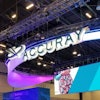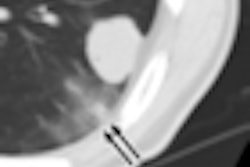A Mayo Clinic study of prostate cancer patients who received salvage radiation therapy following a radical prostatectomy has found that fewer than 15% experience late toxicities, and less than 1% experience serious complications five years after treatment, according to an article published online September 22 in Radiotherapy and Oncology.
Researchers evaluated medical records of 308 patients who received treatment at the Mayo Clinic in Jacksonville, FL, during a 16-year period between 1987 and 2003, and at the Mayo Clinic in Rochester, MN, during a 13-year period between 1987 and 2000. The records were analyzed to determine the nature and severity of late toxicity experienced by prostate cancer patients who received salvage external-beam radiation therapy (EBRT) for a detectable prostate-specific antigen value after radical prostatectomy.
Patients received megavoltage (6-20 MV photons) EBRT confined to the prostatic fossa that corresponded to the estimated preoperative location of the prostate without the seminal vesicles. Patients received a median dose of 64.8 Gy (range, 54.0-72.4) to the prostatic fossa in 1.8 to 2.0 Gy fractions.
Complications occurring 90 days after treatment were attributed to therapy, according to lead author Dr. Jennifer Peterson. Patients had a median follow-up of 60 months, with evaluations performed every three to four months for the first two years following treatment, and at six- to 12-month intervals thereafter.
The patients tolerated EBRT well, the authors reported. An estimated 7% of patients had a late complication within the first two years following salvage therapy, and 14% had a complication within the first five years.
At 60 months, a total of 41 patients (13%) had 54 late complications; most were grade 1 or 2 complications that were managed conservatively or with minimally invasive procedures. Late genitourinary complications of grade 2 or higher occurred in 24 (8.0%) of the patients -- 16 with urethral complications and eight with bladder complications. An estimated 0.7% of the total patient cohort had grade 3 or 4 late complications at five years.
The cumulative rate of recurrence was 1.8% for local recurrence, 5% for regional recurrence, and 14% for metastatic recurrence.
The authors pointed out that profound technological advances in treatment planning and administration of EBRT have occurred since the late 1980s and 1990s, and the percentages of late toxicities might be even lower when similar future studies are conducted.
Related Reading
Salvage radiotherapy for recurring prostate cancer enhances survival odds, June 17, 2009
Copyright © 2009 AuntMinnie.com



















